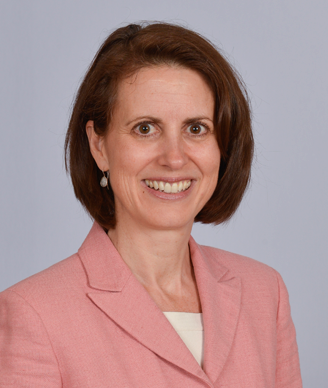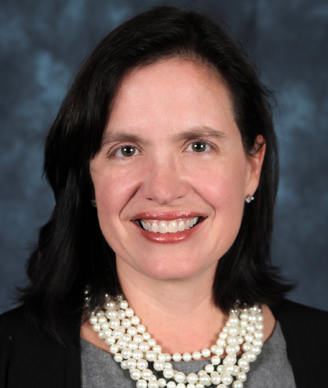Latest Changes in Breast Cancer Screening Guidelines
In this interview we discuss the new American Cancer Society breast cancer screening guidelines and find out how they stack up with other recommendations for mammography screening.
Nancy Keating, MD, MPH

Ermelinda Bonaccio, MD

In light of the new breast cancer screening guidelines recently issued by the American Cancer Society, we are speaking with Ermelinda Bonaccio, MD, director of the Mammography Center and an assistant professor at the Roswell Park Cancer Institute in Buffalo, New York, and Nancy Keating, MD, MPH, professor of health care policy and medicine at Harvard Medical School and a primary care physician at Brigham and Women’s Hospital in Boston, who wrote an editorial that accompanied the new guideline publication.
- Interviewed by Anna Azvolinsky
Cancer Network: Let’s start with the update, Dr. Keating. Could you tell us what is new in this latest guideline from the American Cancer Society?
Dr. Keating: So last month the American Cancer Society released a new guideline, which is its first one on breast cancer screening since 2003. In 2003 they recommended annual mammograms for all women starting at the age of 40, and they’ve shifted their recommendations this time, currently recommending annual mammograms for women starting at the age of 45 through the age of 54. And then starting at age 55 they recommended biannual mammograms, so every other year mammograms as long as women stay healthy and have a life expectancy of at least 10 years. And then they also say that women between the ages of 40 and 44 should have the opportunity to consider mammography screening.
Cancer Network: Dr. Bonaccio, how is the timing and frequency of mammograms different within this newer American Cancer Society guideline compared to that issued by the US Preventive Services Task Force and the American College of Obstetricians and Gynecologists?
Dr. Bonaccio: I would also like to add the National Comprehensive Cancer Network (NCCN). I think that the American Cancer Society guidelines are not that divergent from those of the American College of Obstetricians and Gynecologists as well as the NCCN in that both groups affirm the fact that mammography decreases the risk of dying from breast cancer beginning at age 40. They don’t disagree on that point. The American Cancer Society in its very thoughtful analysis has sort of broken it down. So they give what they call a “strong recommendation” for women between the ages of 45 and 54 and give women the option to screen beginning at age 40, in what is called a “qualified recommendation.” So, I think those are more aligned than that of the US Preventive Services Task Force guidelines, which actually do not recommend screening with mammography beginning at age 40. They recommend starting every 2 years at age 50. So, I think that although one of the goals of the American Cancer Society was to clarify this issue, it actually adds a bit to the confusion of when a woman should start screening with mammography.
Cancer Network: What are both of your opinions on these different screening schedule options? What do both of you recommend and for which patients?
Dr. Keating: To me, what this ultimately underscores is that there is no single right answer to the question about when I should start having a mammogram. I think that what I really recommend is individualizing decisions where patients talk with their doctors and figure out what is right for them. I think that what the challenge is, is that the data are very complicated. There is no one right answer. Mammography has been shown to lower the risk of dying from breast cancer, but that benefit is modest, it is smaller than I think we led women to believe for many years and it also has harms. I think we have underappreciated some of the harms, and we are starting to realize them a lot more.
What I do is talk to my patients, and I make sure they understand that this test has limitations-that it is associated with a lower risk of dying of breast cancer, but it’s a small decrease in that risk-and it’s associated with harms including the harm that we call overdiagnosis, which is that we find cancers that would never have become clinically evident in the absence of screening.
So then what I think we need to do is to talk to our women, take a good history, and figure out, what is their risk of breast cancer? The higher someone’s risk is, the more they are likely to benefit from regular mammography and from starting mammograms earlier. And we also have to talk to women about the benefits as well as the harms and then try to understand if someone is more concerned about the tiny possibility that they might miss a cancer that could have been found that may help to prevent a breast cancer death. If that is their biggest concern, then that woman would probably benefit from starting mammography. Other women may be more concerned with overtreatment and finding cancers they never needed to know about, and those women may be more comfortable waiting until they are 45 or 50 to start mammography screening.
Cancer Network: Dr. Bonaccio, what is your opinion?
Dr. Bonaccio: As of now, I’m actually recommending women begin annual mammography screening starting at age 40. But I am always happy to have the conversation with the patient when they come to me for that particular conversation, besides their primary care doctor or their OB-GYN. But I think that the American Cancer Society paper that came out last month actually reaffirms the decrease in mortality, and they included not just the classic randomized controlled trials but also observational trials and cohort studies, and their decrease in mortality was in the 20% to 40% range, which I still think is significant, and we know that the risk of dying from cancer has decreased over the past few decades. In part this is due to the use of new medications and better treatment but in part this is also attributed to screening with mammography, which is also acknowledged in the paper.
Also, in this paper they discuss that although overdiagnosis is definitely a problem-and we don’t have good quantitative data as to how big of a problem it is, so although we know it exists it is hard to us to assess how significant this is. So like the NCCN, which actually I am on that particular panel, I do continue screening with mammography beginning at age 40. I think that is when we maximize mortality benefit and in some ways, I think this is part of the controversy Dr. Keating was referring to, the data are very complicated, and how you balance risk and benefits, both as a provider and as a patient is not always going to be in complete agreement. The harms here are overdiagnosis, which are very difficult to assess, how significant these are, and what is also mentioned as a harm in the paper published by the American Cancer Society is the risk of a false positive, which is having to have additional mammographic views or, rarely, a biopsy, and finding out that it was not cancer. So there are so many layers that make this complicated in how you balance the risk and benefits of this test.
Cancer Network: Are there important outstanding questions about balancing these harms and benefits of breast cancer screening that are being addressed with ongoing studies?
Dr. Keating: Let me just add to that. I completely agree that we don’t know enough about how to quantify the harms of overdiagnosis. We know it exists, and the estimates have ranged anywhere from 5% to 50% of all cancers diagnosed. The best estimate probably comes from randomized trials that did cancer screening and did not offer screening to the control group after the trial ended, and those suggest that up to 19% of cancers diagnosed during screening with mammography could be overdiagnosis, so cancers that we didn’t need to know about. And if that’s true that is a large amount. The other place where there is tremendous uncertainty is, what is our ability to quantify the benefits? So most of what we know about mammography screening comes from 9 randomized controlled trials that were conducted between the 1960s and the 2000s, and these trials do suggest about a 19% decrease in the likelihood of dying of cancer but there is lots of uncertainty about whether those are generalizable today because they used different technologies.
Modern mammography technologies are much better now, so maybe the effect is bigger, but they also occurred at a time when there was far fewer good treatments for breast cancer. Breast cancer treatment is so much better now that maybe mammography would be less beneficial because we can do so much more with the treatment of the cancers we have. And I totally agree that the American Cancer Society also looked at more current observational studies, which suggest perhaps a larger benefit than what the randomized trials have shown. They did that thinking that the more recent data may reflect more recent mammography technology. That said, with observational studies we have been burned time and time again when we have analyzed and interpreted those data because we know that those who get screening tests are healthier than those who don’t, so it makes it hard to know if we can extrapolate the results of the observational studies to give us a good sense. There has been a call for more modern trials, but it is unlikely that we will see that because it is expensive to do these studies and would be hard in America to get people to randomize to mammograms or no mammograms.
I think that what we really need are new tests that do a better job and lower the likelihood of having a really potentially deadly cancer by more than 19%, and the future will perhaps be more with genomic medicine and identifying women at highest risk and thinking about how we can find their cancers early and/or prevent them.
Dr. Bonaccio: I agree in that I hope we find a better test, I know that there is much research going on to find a better test that can not only find small cancers but help us figure out which ones are actually going to make an impact on a woman’s life. I do think that that 19%, when they do meta-analyses of these randomized, controlled trials, there is a wide range of the mortality benefit and which studies are included and which are not, so even when you look at the randomized controlled trials, that 19% is on the lower end of the mortality benefit that is estimated. And I think in some ways that this test is better than it is. I completely agree with that point. When I talk to women, I always tell them that this test does not find all cancers. If you feel a lump after a mammogram, we still need to see you and further evaluate that, but it’s really the best test we have right now for average-risk women.
Cancer Network: Thank you so much to both of you for joining us today.
Dr. Bonaccio: My pleasure, thank you.
Dr. Keating: Thank you.
Newsletter
Stay up to date on recent advances in the multidisciplinary approach to cancer.